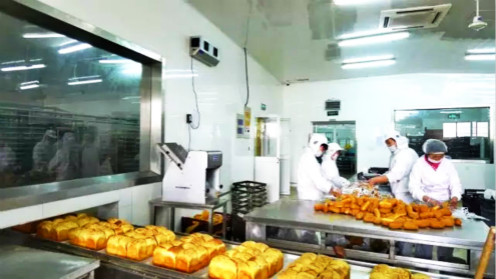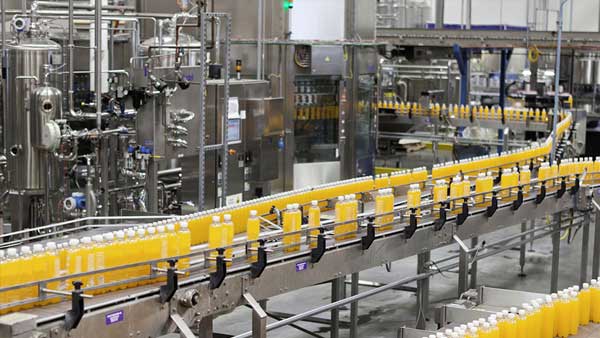Tel: +86 311 8595 5658 E-mail: admin@yuanlvfilter.com
The production of food and beverages is an important, although by no means the largest, component of the separation equipment market. A review of this sector must begin with a definition of its content, which, fortunately, is reasonably precise, involving little overlap with other sectors. The major anomaly lies in the production of drinking water, strictly the largest of the beverages, but in fact so large as to be in an end-use sector of its own, and therefore not included here. Minor classification problems would include the production of fermentation ethanol, as a fuel or as a beverage (or an industrial chemical), and the use of animal or vegetable fats and oils for industrial purposes.

The actual coverage by this article of the specific end-use applications is then as given in the following list, in the order used in the UK Standard Industrial Classification:
• Processing of meat, fish and their solid products (excluding oils and fats).
• Processing of fruit and vegetables and their solid products (excluding oils, fats and juices).
• Processing of oils and fats from animal and vegetable sources.
• Manufacture of dairy products (milk, cheese, etc).
• Milling of grain, and manufacture of cereal and starch products.
• Production of animal feedstuffs (i.e. food for husbanded animals, and domestic pets).
• Production of bread, sugar, cocoa and confectionary.
• Processing of tea and coffee.
• Production of beverages (alcoholic and non-alcoholic), including fruit and vegetable juices, and bottled mineral water.
Several of these sub-sectors are, of course, completely dry processes, but with a sufficiency of liquid processing in the other parts, and of utility filtration (pneumatics, hydraulics and other operating services), enough to make this the fifth largest of the end-use sectors, utilising almost all kinds of separation equipment. The process filters and centrifuges are used in the preparation of ingredients, in the production process itself, in the purification of products, and in the recycling or treatment of waste streams.
There is a very wide range of liquid processes involved in the food and beverage sector, some with quite high intrinsic values, offering a wide range of separation processes. In many parts of it, this is a mature sector, with steady growth driven by increasing populations, and increasing standards of living in less well developed areas of the world.
Filtration market size and trends
The estimated global sales volume, for the equipment used in filtration and related separations in the food and beverage sector in 2009, is estimated to have been around $3.6 billion. (It is important to note that this figure includes all membrane process applications, which form a major component of the market in this sector.)
This estimate covers both original equipment and the sale of spare parts. The sale of filter media, in bulk or as finished elements, to the makers of filters is not counted as a separate item, because such media sales are covered by the sales of the complete filters. Filter media sales are only included in the estimate where they are made directly to their end-user, as part of the supply of spares.
This figure of close to $3.6 billion gives the sector about 7.5% of the total global market for these types of equipment, and puts it at fifth in order of the major end-use sectors, in a list that has bulk chemicals and petrochemicals at fourth, and fine chemicals and pharmaceuticals at sixth.
Trends
This is not an easy time in which to be forecasting market trends, with the credit crunch and consequent recession only just moving behind us. The filtration industry is fortunate in being so widely represented and needed in the world's industrial and commercial activity, and particularly in the food and beverage sector. The products of this sector are obviously in continuing demand, and expenditure on them will continue while that on less essential goods and services may be more profoundly affected.
It can confidently be said, therefore, that the rate of growth of the food and beverage sector's filtration equipment market will continue to be 2-3% above the general rate of economic growth. This still means that, as a result of the recent economic recession, 2009 will have shown no real growth over 2008, although the market will return to growth in 2010, with a real, uninflated figure of about 2% in 2010, climbing back to 6 or 7% by 2013.
This growth will continue to be driven by the increasing demands for finer filtration.
Equipment applications

It is probably true that every possible type of filter, centrifuge or sedimentation system is in use somewhere in the world on some process within the food and beverage sector. Some characteristic food and beverage applications include:
• The use of basket centrifuges in the production of salt;
• The separation of cream from milk in a disc centrifuge – for which this type of centrifuge was invented;
• The further purification of water by membranes to serve as a food or beverage ingredient;
• The use of a rotary vacuum drum filter in the separation of sugar juice from settled-out muds, followed later by a ‘sugar centrifugal' to recover the crystallised product;
• The purification of starch in batteries of hydrocyclones, which provides one of the key uses of the hydrocylone;
• The refining of vegetable seed oils, after washing with water, in an array of tubular or disc centrifuges, followed, usually, by winterising (dewaxing) in vacuum filters; and
• Among many separation activities in a brewery or a distillery, the dewatering of separated grains in a filter press or decanter centrifuge, and the clarification of the product in a sheet filter.
In addition, there is the need in most food and beverage factories for the treatment of often very concentrated liquid wastes, requiring the full gamut of treatment stages, from oil and grease separation (in a lamellar separator), followed by primary settlement (in large sedimentation tanks), then secondary activated treatment (in aerated tanks) with separation of the surplus sludge in a filter or another settlement tank. The process will then finish with tertiary treatment, possibly a biological one, or, increasingly commonly, a membrane micro- or ultrafiltration stage, to deliver recycled water of a similar standard to the fresh ingredient water.
Our Yuanlv Filter can export various of wedge wire filter screen strainers to all over the world, and all our products can OEM. so please contact us if you want to order.